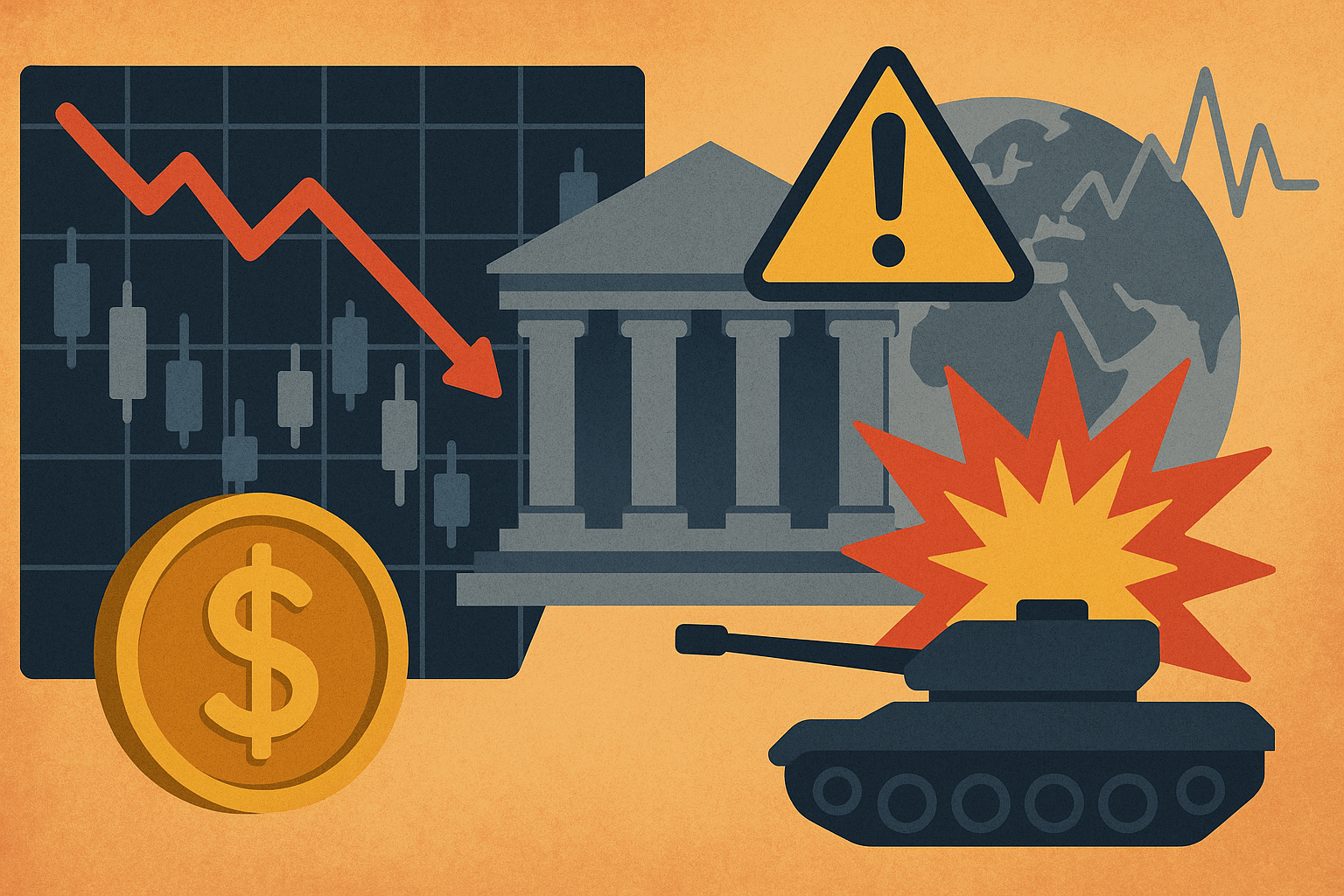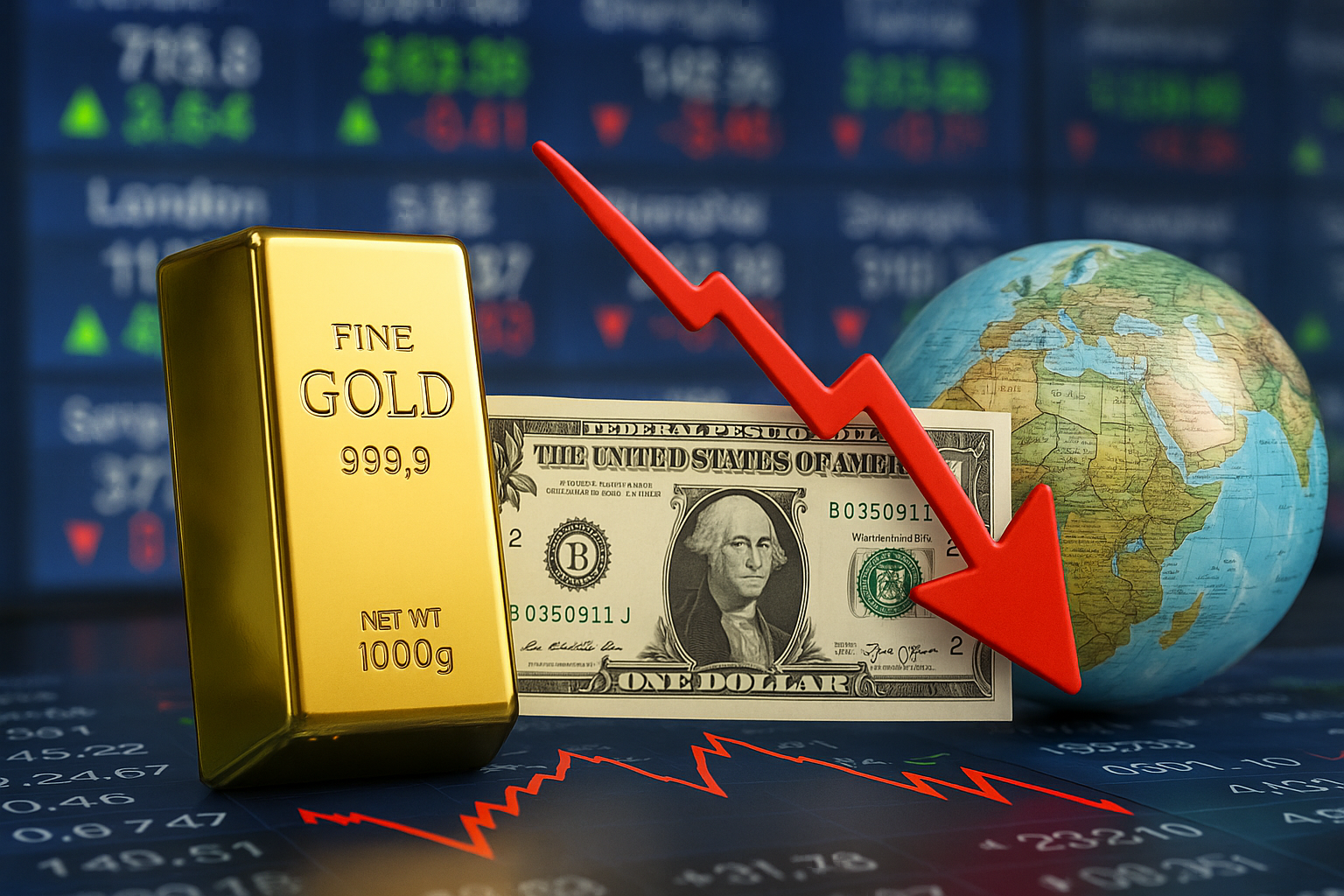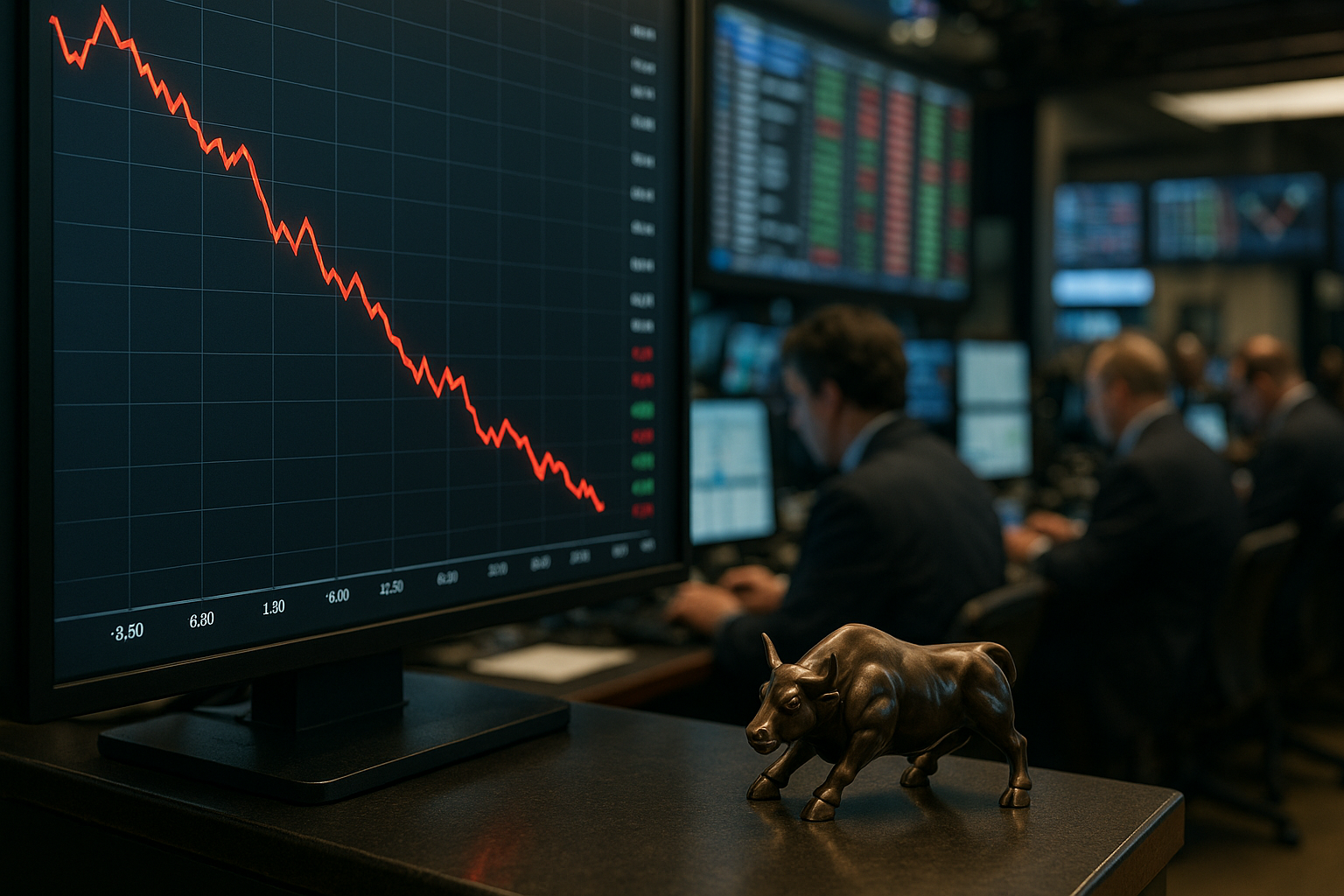Stock market sentiment turned risk-averse today, as escalating Middle East tensions and renewed hawkish signals from the U.S. Federal Reserve weighed on global equities. With bond yields holding steady and equity volatility creeping upward, investors are reassessing portfolio strategies amid growing macroeconomic headwinds.
From Wall Street to Frankfurt and Tokyo, equity indices moved lower on June 19, reflecting a cocktail of uncertainty around monetary policy, international conflict, and fragile investor sentiment. The MSCI World Index dipped 0.4%, while Europe’s STOXX 600 fell nearly 0.6%, led by declines in energy, financials, and industrials. U.S. markets opened lower, with the S&P 500 down 0.3% in early trading.
Behind the moves lies a convergence of short-term uncertainty and long-term recalibration: the Federal Reserve signaled a more gradual rate-cut path than markets had anticipated, and Israel–Iran tensions continue to inject geopolitical risk premiums into commodities and global risk assets.
Why This Matters for Investors
Markets are no longer trading on optimism alone. After a strong first half driven by AI-fueled tech gains and soft-landing hopes, investors are now digesting more sobering signals.
In a post-FOMC conference, Fed Chair Jerome Powell noted “modest further progress” on inflation but said policymakers are not yet confident enough to pivot decisively toward rate cuts. This dashed expectations of a July or September move and prompted a repricing in rate-sensitive sectors. Futures now price in only one rate cut for 2025, down from two just last month (source: CME FedWatch Tool).
Meanwhile, Middle East tensions are adding a layer of market fragility. Analysts at JPMorgan warn that a full-scale U.S. engagement in the Israel–Iran conflict could result in a 5–7% immediate pullback in U.S. equities, with oil surging above $100/bbl (source: JPMorgan Global Markets Note, June 18).
The combination of macro tightening and geopolitical risk has increased flows into safe-haven assets:
- Gold rose 0.2% to $2,374/oz,
- U.S. 10-year Treasury yields remain range-bound around 4.25%,
- The dollar index (DXY) gained 0.3%, signaling cautious investor positioning.
Sector-Level Movements & Investor Sentiment
Sectors most impacted by this shift include:
- Technology: High-growth names slid, particularly in semiconductors and cloud computing, on concerns over elevated discount rates.
- Financials: Banks saw mild declines as the delayed rate-cut scenario pressures net interest margins.
- Commodities & Energy: Oil and defense-related stocks gained modestly on geopolitical escalation, but gains were limited by demand uncertainty.
Investor sentiment indicators like the AAII Bull-Bear Spread and CNN Fear & Greed Index are trending neutral, suggesting a cautious wait-and-see approach.
Expert Commentary
“We’re in a twilight zone between optimism and realism,” said Lori Calvasina, Head of U.S. Equity Strategy at RBC Capital Markets. “Investors want clarity from both the Fed and geopolitics, and until then, volatility will stay elevated.”
“Equity multiples are stretched, and the risk premium is too thin for this backdrop,” added Mike Wilson, Chief U.S. Equity Strategist at Morgan Stanley. “We’re advising clients to rotate into quality defensives and fixed income.”
Future Trends to Watch
- Fed Messaging & Data: Next week’s Core PCE and July Non-Farm Payrolls will be pivotal. A softer inflation print could revive rate-cut hopes.
- Geopolitical Flashpoints: Any U.S. military involvement in the Middle East would materially reshape equity and commodity market outlooks.
- Quarterly Earnings: As Q2 earnings season approaches, investors will watch for guidance shifts—especially among consumer, industrial, and financial stocks.
Key Investment Insight
Investors should consider defensive sector exposure, such as healthcare, consumer staples, and dividend aristocrats. Meanwhile, holding cash or short-term Treasuries may offer optionality in uncertain environments.
For those maintaining equity exposure, emphasize high-quality companies with strong balance sheets and earnings durability. Flexibility, not just conviction, is key in this market.
Stay informed with MoneyNews.Today — your go-to platform for real-time investor insights, market intelligence, and actionable news that helps you stay one step ahead.





